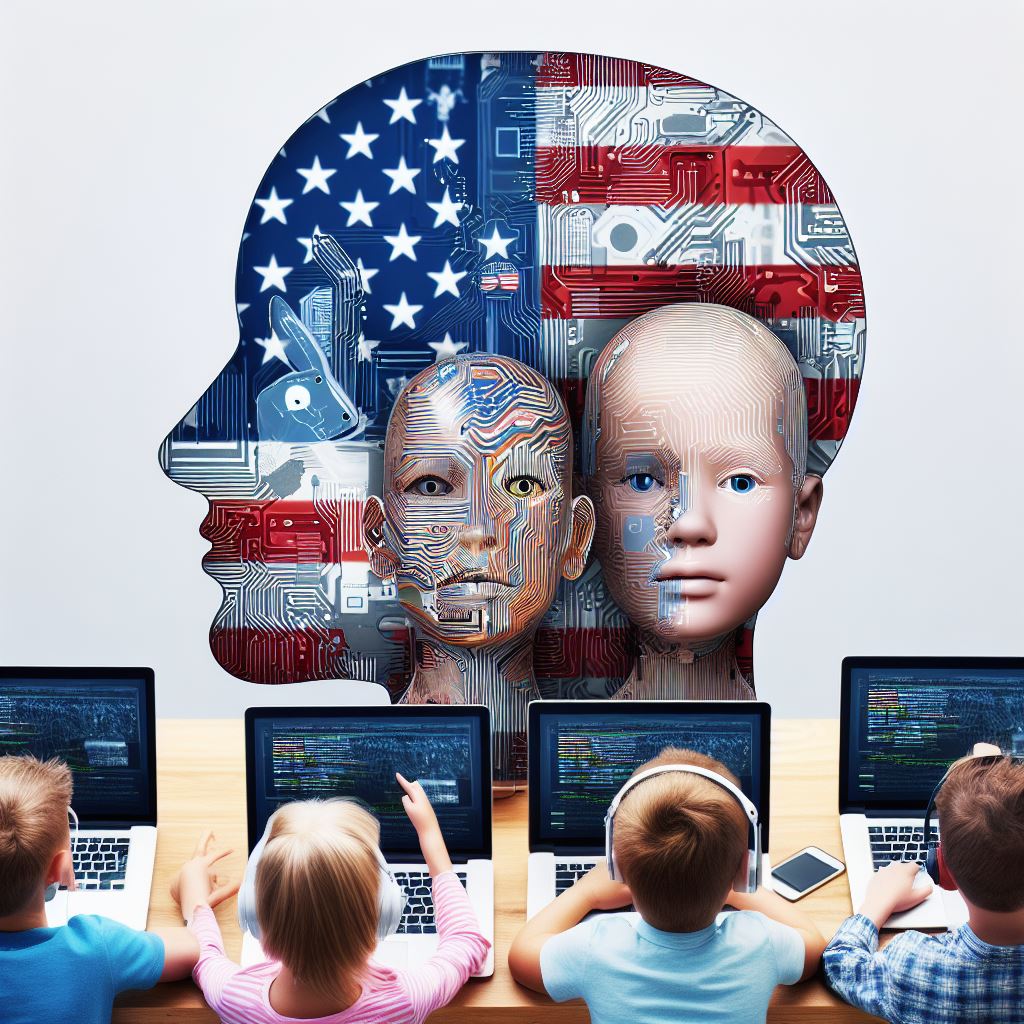Kids and Code: Preparing America’s Next Generation
Last Updated on October 5, 2023
Introduction
Importance of Coding Skills in the Modern World
In today’s digital age, coding has become an essential skill that holds great significance.
With technology constantly advancing, coding skills have become increasingly valuable in numerous industries.
From web development to artificial intelligence, coding is the language that powers our modern world.
The Need to Prepare the Next Generation
As the world becomes more digitalized, it is crucial to equip the next generation with coding skills.
By teaching kids to code from an early age, we empower them with a toolset for future success.
Coding promotes essential skills like problem-solving, logical thinking, and creativity, vital for the future workforce.
The Benefits of Teaching Kids to Code
Improved problem-solving skills
Teaching kids to code not only equips them for a future in technology but also offers numerous cognitive benefits. One of the most significant advantages is the improvement of problem-solving skills.
When kids learn to code, they are exposed to a logical thinking process that helps them analyze problems and find effective solutions.
This logical thinking and reasoning ability developed through coding can be applied to various aspects of their lives, both in and outside of technology.
Whether it’s troubleshooting a computer issue or solving a math problem, the problem-solving skills gained from coding can be highly valuable.
Furthermore, coding also enhances analytical and critical thinking skills. As kids write code, they have to think critically about each line and its purpose.
They learn to identify and fix errors, which requires an analytical mindset. This ability to think critically helps kids become better decision-makers in their future endeavors.
Enhancing creativity and innovation
Another benefit of teaching kids to code is the enhancement of creativity and innovation. Coding encourages kids to think outside the box and come up with unique solutions to problems.
In the process of coding, kids learn to find creative ways to make their programs more efficient or visually appealing.
This creativity transfers to other areas of their lives, enabling them to approach challenges with innovative solutions.
Moreover, coding fosters a sense of innovation by providing kids with the tools to bring their ideas to life.
They can develop their own games, apps, or websites, allowing them to unleash their creativity and share their creations with others.
This hands-on experience with coding fuels their passion for technology and inspires them to pursue further innovation.
Increased computational thinking
Teaching kids to code also increases their computational thinking abilities. By understanding algorithms and patterns, kids can break down complex problems into smaller, more manageable parts.
This process of abstraction and decomposition is a crucial skill in coding, as it allows kids to organize their thoughts and solve problems efficiently.
Computational thinking can extend beyond coding and positively impact their academic performance in subjects like math and science.
In essence, teaching kids to code offers a range of benefits that extend beyond technology.
Improved problem-solving skills, enhanced creativity and innovation, and increased computational thinking are just a few of the advantages.
By providing children with the opportunity to learn to code, we equip them with valuable skills that will benefit them now and in their future endeavors.
Read: Code and Healthcare: How Developers Impact Medicine
Integrating Coding into School Curriculum
Importance of early exposure to coding
Early exposure to coding is crucial for children as it helps them develop a solid foundation in computational thinking and problem-solving skills.
By introducing coding concepts at a young age, students can build a strong groundwork for future learning.
Furthermore, exposing children to coding early on fosters a lifelong interest and passion for technology. It allows them to explore their creativity and curiosity while building valuable cognitive abilities.
Incorporating coding into various subjects
In today’s digital age, coding can be seamlessly integrated into various subjects, enhancing students’ learning experiences across the curriculum.
Mathematics and logical thinking go hand in hand with coding.
By incorporating coding activities into math lessons, students can apply logical reasoning and problem-solving skills to solve mathematical problems in a more engaging and interactive way.
Similarly, science education can be enriched by integrating coding. Students can use coding to simulate experiments and analyze data, enabling them to grasp complex scientific concepts more effectively.
Language arts and storytelling can also benefit from coding. Through coding, students can bring their narratives to life by creating interactive stories and games.
This not only enhances their language skills but also nurtures their creativity and imagination.
By integrating coding across various subjects, educators can provide a multidisciplinary approach that prepares students for the ever-evolving digital landscape.
It equips them with essential skills such as critical thinking, problem-solving, and collaboration.
Read: Coding Bootcamps: Fast-Tracking Tech Careers in the USA
Resources for Teaching Kids to Code
Teaching kids to code is crucial in preparing America’s next generation for the digital era.
With technology advancing rapidly, coding has become a valuable skill set that opens up numerous opportunities for young learners.
Fortunately, there are various resources available to aid in teaching kids how to code effectively.
Coding clubs and organizations
One way to introduce coding to kids is through local community programs. Many community centers and libraries offer coding classes and workshops specifically designed for children.
These programs provide a structured learning environment where kids can interact with peers who share their interest in coding.
Additionally, online platforms dedicated to coding education, such as Code.org and Scratch, offer interactive lessons that engage young learners and make coding accessible from anywhere.
Free coding resources and tutorials
For those who prefer self-paced learning, there are many websites and apps available for beginners.
Codecademy and Khan Academy, for example, offer free coding lessons that cover a wide range of programming languages and concepts.
These resources provide step-by-step instructions and interactive exercises to help kids grasp fundamental coding skills.
Additionally, coding challenges and competitions hosted on platforms like HackerRank and Topcoder allow kids to apply their coding knowledge in a fun and competitive environment, fostering their problem-solving skills and creativity.
Coding toys and games
Another exciting way to introduce coding to kids is through educational toys and games. Companies like Sphero and Ozobot create educational toys that promote coding concepts.
These interactive toys allow kids to physically control and program robots, teaching them programming logic and algorithmic thinking in a hands-on manner.
Similarly, gamified coding education platforms like Minecraft and CodeCombat make coding enjoyable by integrating it into immersive game experiences.
By turning coding into a game, kids stay engaged and develop critical thinking skills while having fun.
In fact, there are abundant resources available for teaching kids to code in order to prepare America’s next generation.
From coding clubs and organizations to free online resources, kids can take advantage of various learning opportunities tailored to their needs and interests.
Additionally, coding toys and games provide a hands-on and gamified approach to coding education, making it accessible and enjoyable for young learners.
By equipping children with coding skills, we empower them to navigate the digital world confidently and foster creativity, problem-solving, and critical thinking abilities that are essential for their future success.
Read: How to Scrape Web Data into Excel with VBA

Overcoming Barriers to Teaching Coding to Kids
Lack of coding curriculum and trained teachers
One of the major barriers to teaching coding to kids is the lack of coding curriculum and trained teachers.
In order to overcome this obstacle, it is essential to advocate for the integration of coding into the school curriculum.
By recognizing the importance of coding education, schools can allocate resources and time to develop comprehensive coding curricula.
Additionally, training opportunities should be provided for teachers to enhance their coding skills and knowledge.
Workshops, seminars, and online courses can be offered to ensure that teachers are equipped with the necessary expertise to effectively teach coding to kids.
Addressing the gender gap in coding education
Another significant barrier to teaching coding to kids is the persistent gender gap in coding education. In order to address this issue, it is crucial to encourage girls’ participation in coding.
By organizing coding clubs and events specifically targeted at girls, schools and organizations can create a supportive and inclusive environment that fosters girls’ interest in coding.
It is essential to promote diversity and inclusivity in coding programs.
By showcasing successful role models from diverse backgrounds, kids can be inspired and motivated to pursue coding regardless of their gender or ethnicity.
Addressing socioeconomic inequalities in access to coding education
Socioeconomic inequalities pose a significant barrier to accessing coding education for many kids. To overcome this barrier, steps need to be taken to provide coding resources in disadvantaged communities.
This can be done by establishing coding centers or offering coding workshops in schools located in economically challenged areas.
Additionally, scholarships and financial aid should be provided to ensure that kids from low-income backgrounds have equal opportunities to enroll in coding programs.
By addressing socioeconomic inequalities, we can ensure that all kids have equal access to coding education.
In short, various barriers hinder the effective teaching of coding to kids.
However, by advocating for coding integration in schools, providing training opportunities for teachers, encouraging girls’ participation, promoting diversity and inclusivity, and addressing socioeconomic inequalities, we can overcome these barriers and prepare America’s next generation for a technologically advanced future.
Read: Your First Code: Writing a Simple Program
Real-Life Examples of Successful Coding Initiatives for Kids
Technology has a profound impact on every aspect of our lives, including our careers, interactions, and problem-solving abilities.
As technology continues to evolve, it is crucial for upcoming generations to possess the skills necessary to navigate this digital world confidently. That’s why coding initiatives for kids are gaining prominence.
In this section, we will explore real-life examples of successful coding initiatives that have prepared America’s next generation for the future.
Code.org and the Hour of Code campaign
A major player in the field of coding education is Code.org and its renowned Hour of Code campaign.
Code.org aims to bring coding to every student, ensuring that computer science education is accessible and widespread.
The Hour of Code is a critical initiative under Code.org that promotes coding activities in schools worldwide. By dedicating just one hour to coding, students gain exposure to fundamental programming concepts.
The impact of the Hour of Code campaign has been remarkable. It has reached millions of students across the globe and ignited their curiosity in coding.
Students who have participated in the Hour of Code have expressed newfound interest in computer science and have continued their coding journey beyond the initial hour.
Numerous success stories showcase how the Hour of Code has changed the trajectory of students’ lives, opening up new career opportunities and cultivating their passion for coding.
Scratch programming language and its educational applications
Another coding initiative that has revolutionized the way kids learn programming is Scratch.
Developed by the MIT Media Lab, Scratch is a visual programming language that empowers kids to create interactive stories, games, and animated projects.
It provides a user-friendly interface where kids can drag and snap code blocks together, eliminating the daunting syntax of traditional programming languages.
Scratch offers several benefits to young learners. Firstly, it enhances their problem-solving skills by encouraging them to break down complex tasks into smaller, more manageable steps.
Secondly, Scratch fosters creativity, allowing kids to bring their imaginative ideas to life through engaging animations and interactive projects.
Lastly, Scratch develops their logical thinking abilities as they learn to structure code logically to achieve desired outcomes.
The educational applications of Scratch are vast, with countless examples of creative projects developed by kids.
From interactive storytelling and game design to simulations and music composition, kids have demonstrated their capabilities in using Scratch to create impressive projects.
Through these hands-on experiences, they not only gain coding skills but also develop essential skills such as collaboration, perseverance, and critical thinking.
All in all, real-life success stories from coding initiatives for kids highlight the increasing importance of preparing America’s next generation for a technology-driven future.
Code.org’s Hour of Code campaign has introduced millions of students to computer science, igniting their passion for coding.
Meanwhile, Scratch has revolutionized coding education by enabling kids to create interactive projects while enhancing their problem-solving and logical thinking abilities.
These initiatives provide valuable opportunities for kids to explore the world of coding and unlock their potential in a digital society.
Conclusion
It is essential to prepare the next generation with coding skills to meet the demands of the future.
Parents and educators should actively support coding education to maximize its benefits.
Preparing the next generation with coding skills is essential to America’s future. Coding is a foundational skill that can be used to solve problems and create new technologies.
Parents and educators can support coding education by providing opportunities for kids to learn to code.
There are many different ways to do this, such as enrolling kids in coding classes, providing them with coding resources, and encouraging them to explore coding on their own.
By supporting coding education, we can help to prepare the next generation for success in the workforce and to contribute to America’s future innovation.
Potential positive impact on America’s future workforce and innovation
- A workforce with strong coding skills will be more competitive in the global economy.
- Coding can help to create new jobs and industries.
- Coding can help to solve complex problems and improve people’s lives.
By equipping children with coding knowledge, we can positively impact America’s future workforce and foster innovation.


